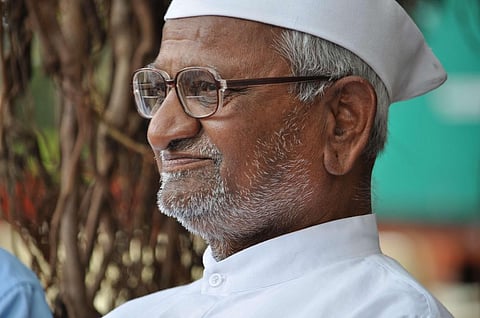
- Home
- न्यूजग्राम
- NewsGram USA
- India
- World
- Politics
- Entertainment
- Culture
- Lifestyle
- Economy
- Sports
- Sp. Coverage
- Misc.
- NewsGram Exclusive
- Jobs / Internships

Ralegan Siddhi is a small village located in the Ahmednagar district of Maharashtra with 2500 people residing in it. It has set an example for various other villages throughout the country through its development.
The World Bank Group has reasoned that Ralegan Siddhi was changed from an exceptionally corrupted village environment in a semi-dry district of extreme destitution to one of the most extravagant in the nation. The Ralegan Siddhi model, presently 25 years of age, by exhibiting that it is conceivable to remake regular capital in the organization with the neighbourhood economy, is a model for the remainder of the nation.
The web series Transparency: Pardarshita written, directed, and produced by Dr. Munish Raizada is about transparency in governance and the internal ongoing politics in India. The 6th episode of this web series- "Swaraj Ke Tapu" shows how Anna Hazare, by heart a Gandhian has changed the very corrupted town of the populace around 2500 into liveable heaven for the helpless locals.
Sustainable Development contemplates that people should not merely participate, but must be in charge of their own development.
When Munish Raizada met Anna Hazare, in the 6th episode of the web series he says that during 1975, Ralegan was well-known for poverty, hopelessness, soil-degradation, and the illicit liquor trade. Wells ran dry which made it difficult for people to find drinking water. Everything turned upside down when a retired army driver- Anna Hazare settled in the village. He couldn't resist seeing the village getting worse.
Anna Hazare baptized the villagers with five divine rules. Wikimedia Commons
His first step was that he donated Rs. 3000 for the renovation of the local Temple. In the temple he baptized the villagers with five divine rules- prohibition of liquor, family planning, ban on open grazing, ban on deforestation, and voluntary labour. Inculcating of voluntary labour was to depend less on the government authorities.
Want to read more in Hindi? Checkout: कथनी से ज़्यादा करनी पर ज़ोर देने वाले बने दो आदर्श ग्राम
Work began with the percolation tank constructed In the village. People voluntarily would repair the tank when it was leaked. People reposed their faith In Hazare and his vision.
A group of youth called 'Taruna Mandal' was formed. This group would work on the ban of dowry, caste discrimination, and untouchability. A Stall-feeding system was introduced. The cultivation of water-Intensive crops like sugarcane was avoided. Crops like pulses, oilseeds, and certain cash crops with low water requirements were grown.
A school worth Rs 22 lacs was constructed using the resources of the village without any donations. Money was borrowed if needed and paid back. The villagers took pride In this self-reliance.
Anna Hazare mentions that people volunteered to work on each others' land. Landless labourers also gained employment and livelihood. Today the village plans to buy land for them in the adjoining villages.
